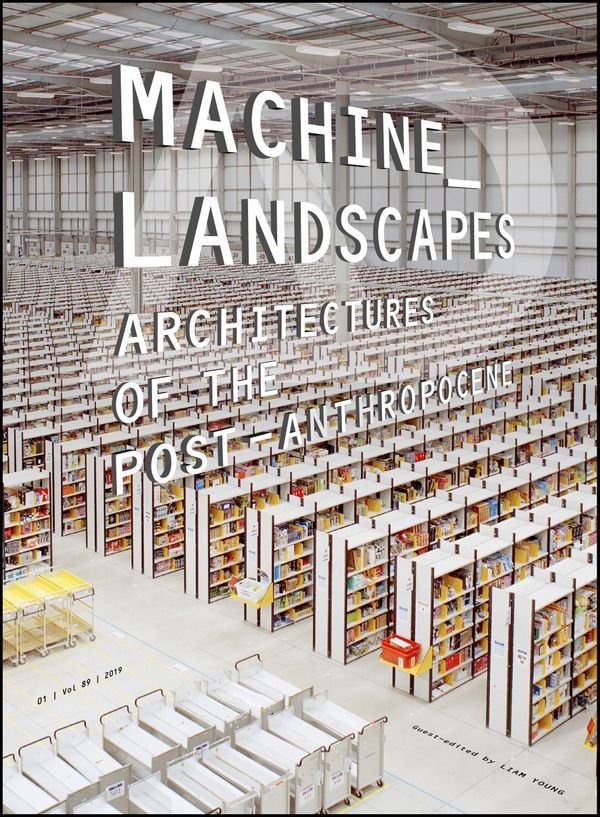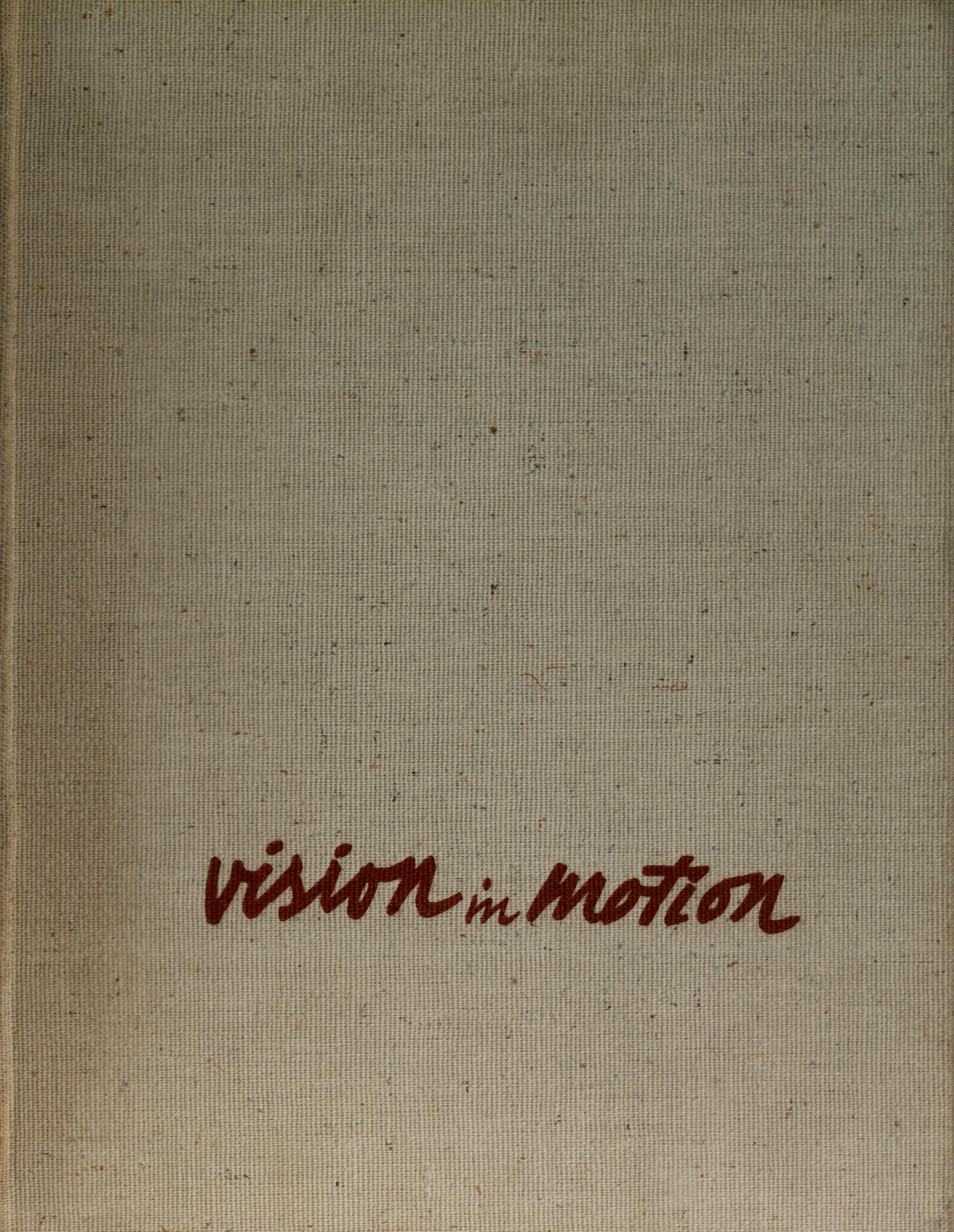Architectural Design, 89(1): Machine Landscapes: Architectures of the Post‐Anthropocene (2019)
Filed under magazine | Tags: · anthropocene, architecture, data center, design, infrastructure, machine, media infrastructure

“This issue of Architectural Design (AD) discusses how the most significant architectural spaces in the world are now entirely empty of people. The data centers, telecommunications networks, distribution warehouses, unmanned ports, and industrialized agriculture that define the very nature of who we are today are at the same time places we can never visit. Instead, they are occupied by server stacks and hard drives, logistics bots and mobile shelving units, autonomous cranes and container ships, robot vacuum cleaners and internet-connected toasters, driverless tractors and taxis.
This issue is an atlas of sites, architectures, and infrastructures that are not built for us, but whose form, materiality, and purpose are configured to anticipate the patterns of machine vision and habitation rather than our own. We are said to be living in a new geological epoch, the Anthropocene, in which humans are the dominant force shaping the planet. This collection of spaces, however, more accurately constitutes an era of the Post-Anthropocene, a period where technology and artificial intelligence now compute, condition, and construct our world. Marking the end of human-centred design, the issue turns its attention to the new typologies of the post-human, architecture without people, and our endless expanse of Machine Landscapes.”
Contributors: Liam Young, Benjamin H. Bratton, Trevor Paglen, Adam Harvey, Jenny Odell, Geoff Manaugh, Ben Roberts, Jesse LeCavalier, John Gerrard, Rem Koolhaas, Ingrid Burrington, Xingzhe Liu, Merve Bedir, Jason Hilgefort, Simone C. Niquille, Tim Maughan, Clare Lyster, Alice Gorman, Ian Cheng, Cathryn Dwyre, Chris Perry, David Salomon, and Kathy Velikov.
Edited by Liam Young
Publisher Wiley, January/February 2019
Open access
ISSN 0003-8504
ISBN 9781119453017
144 pages
Craig Buckley: Graphic Apparatuses: Architecture, Media, and the Reinvention of Assembly 1956-1973 (2013)
Filed under thesis | Tags: · architecture, assembly, collage, history of architecture, machine, media, montage
“This study examines the work of a number of architects who sought to rethink the physical, visual, and historiographic problems of assembly at a moment when the discipline was being destabilized by changing cultural politics and the proliferation of new electronic media.
Through a series of case studies, it analyzes buildings, images, publications, prototypes, and films made from the late 1950s to the early 1970s by architects in London (Theo Crosby and Edward Wright), Vienna (Hans Hollein, Gunther Feuerstein, Walter Pichler), Paris (the Utopie group), and Florence (the Superstudio group).
I argue that during these years the making of composite images was intensely identified with imagining new forms of construction, a dynamic informed by concepts of montage pioneered by the historical avant-gardes. Rather than compare postwar experiments to those of the 1920s, the dissertation considers how emerging media practices responded to the absorption of montage into postwar mass culture. The rethinking of montage paralleled a changing attitude toward machines, in which an earlier 20th-century ambition to master mechanization through design and prefabrication gave way to an attitude emphasizing a more flexible combination and rearrangement of parts, materials, and concepts drawn from a wide range of sources. Assembling an image out of disparate photomechanical elements graphically enacted the manner in which architects imagined appropriating technologies and materials from outside the domain of architecture in a bid to transform the discipline. During these years architects engaged montage as a mode of working both within and against the space of architectural publicity; one that was less illustrative than it was performative.
If efforts to reinvent problems of assembly aimed to shift discourse within the discipline, they were also shaped by changes in the technological apparatuses of mechanical reproduction, notably the displacement of industrial letterpress by photo-offset lithography. In retrospect, grasping changing ideas of assembly helps to comprehend how during these years the status of building shifted within architectural culture, while also prefiguring how habits of “cut and paste,”–the continual combination and alteration of ready-made visual material–would become central to the operational culture of digital tools in our own time.”
Publisher Architecture Department, Princeton University, 2013
Advisors: Beatriz Colomina and Spyros Papapetros
316 pages
PDF (12 MB)
Comment (0)L. Moholy-Nagy: Vision in Motion (1947)
Filed under book | Tags: · abstraction, architecture, art, art education, bauhaus, biology, design, film, image, industrial design, life, light, literature, machine, motion, painting, perception, photography, poetry, sculpture, technology, visual communication, visual poetry

“This book is written for the artist and the layman, for everyone interested in his relationship to our existing civilization. It is an extension of my previous book, The New Vision. But while The New Vision gave mainly particulars about the educational methods of the old Bauhaus, Vision in Motion concentrates on the work of the Institute of Design, Chicago, and presents a broader, more general view of the interrelatedness of art and life.” (from the author’s foreword)
Publisher Paul Theobald, Chicago, 1947
371 pages
PDF (114 MB, no OCR)
Comments (2)
